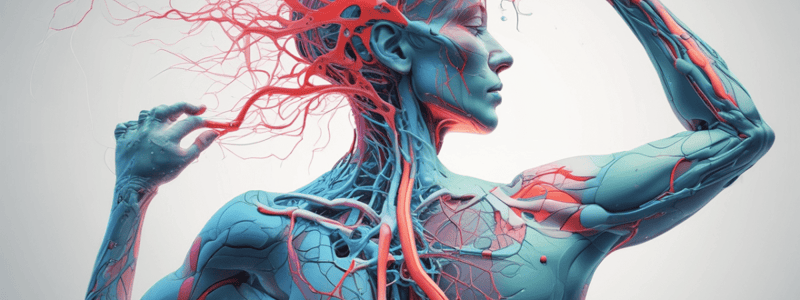Podcast
Questions and Answers
What does the 'optimal subspace hypothesis' assume about movement production (Brown & Teskey, 2014)?
What does the 'optimal subspace hypothesis' assume about movement production (Brown & Teskey, 2014)?
- It is unrelated to any preparatory activity.
- It is solely determined by the behavioral task.
- It is triggered by the crossing of an appropriate threshold.
- It is dependent on the initial state of firing rates. (correct)
In the context of the optimal subspace hypothesis, what does the 'optimal subregion' refer to (Brown & Teskey, 2014)?
In the context of the optimal subspace hypothesis, what does the 'optimal subregion' refer to (Brown & Teskey, 2014)?
- A region where all firing rates must cross to produce a movement.
- A threshold that triggers movement initiation.
- A specific cue that indicates the start of movement preparation.
- A subset of population firing rates suitable for accurate movement. (correct)
How does motor preparation differ between the 'optimal subspace hypothesis' and the 'rise-to-threshold model' (Brown & Teskey, 2014)?
How does motor preparation differ between the 'optimal subspace hypothesis' and the 'rise-to-threshold model' (Brown & Teskey, 2014)?
- In both models, movement initiation is solely dependent on external cues.
- In both models, firing rates must cross a specific threshold to initiate movement.
- In neither model, firing rates are considered during preparatory activity.
- In the hypothesis, firing rates remain within an optimal region, whereas in the model, a threshold triggers movement. (correct)
What is the key difference in firing rate concentration between the 'optimal subspace hypothesis' and other models during delay periods (Brown & Teskey, 2014)?
What is the key difference in firing rate concentration between the 'optimal subspace hypothesis' and other models during delay periods (Brown & Teskey, 2014)?
What is preserved by keeping firing rates within the optimal subregion while awaiting movement initiation (Brown & Teskey, 2014)?
What is preserved by keeping firing rates within the optimal subregion while awaiting movement initiation (Brown & Teskey, 2014)?
Which movement type was given a score of 0.5 in the study mentioned (Kida et al., 2016)?
Which movement type was given a score of 0.5 in the study mentioned (Kida et al., 2016)?
What does the '0' score represent for movements in the study (Kida et al., 2016)?
What does the '0' score represent for movements in the study (Kida et al., 2016)?
Which cortical area showed a size of 0.575 mm² in the forelimb motor map topography (Kida et al., 2016)?
Which cortical area showed a size of 0.575 mm² in the forelimb motor map topography (Kida et al., 2016)?
What are the AP coordinates for the Supination movement representation (Kida et al., 2016)?
What are the AP coordinates for the Supination movement representation (Kida et al., 2016)?
In the study, what type of movements were chosen to provide effective deactivation of the CFA or RFA (Kida et al., 2016)?
In the study, what type of movements were chosen to provide effective deactivation of the CFA or RFA (Kida et al., 2016)?
Which type of stimulation is far more effective in M1 and M1 originating fibers (Jahangiri et al., 2022)?
Which type of stimulation is far more effective in M1 and M1 originating fibers (Jahangiri et al., 2022)?
Why might negative mapping be sought in some cases during brain stimulation (Jahangiri et al., 2022)?
Why might negative mapping be sought in some cases during brain stimulation (Jahangiri et al., 2022)?
How does Taniguchi's short-train method differ from the Penfield method in terms of monitoring during tumor removal (Jahangiri et al., 2022)?
How does Taniguchi's short-train method differ from the Penfield method in terms of monitoring during tumor removal (Jahangiri et al., 2022)?
What does the tangential-radial triphasic (TRT) cortical model aim to reduce (Jahangiri et al., 2022)?
What does the tangential-radial triphasic (TRT) cortical model aim to reduce (Jahangiri et al., 2022)?
How does the Penfield method differ from Taniguchi's short-train method in analyzing factors like latency and duration (Jahangiri et al., 2022)?
How does the Penfield method differ from Taniguchi's short-train method in analyzing factors like latency and duration (Jahangiri et al., 2022)?
Flashcards are hidden until you start studying





